Some attractions subject to closure or limited entrance due to COVID-19. Please check before visiting.
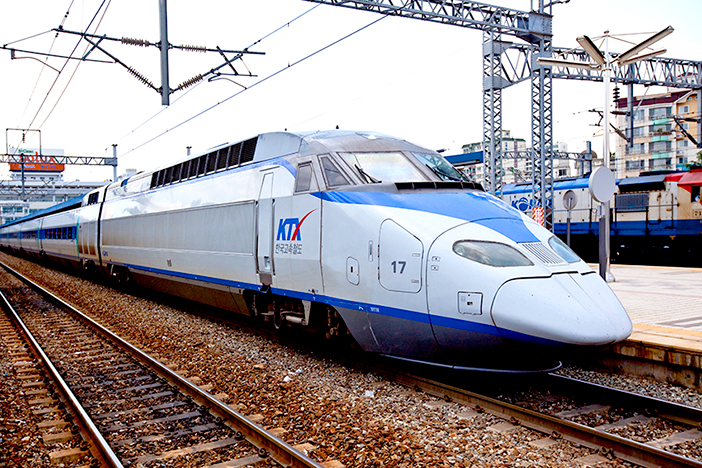 【 Photo: KTX Train 】
【 Photo: KTX Train 】 One of the most convenient ways to travel between cities in Korea is by train. Bus schedules can vary depending on traffic, but that is hardly the case for the railroad, allowing passengers to make accurate travel plans and move to destinations on time.
Korean trains are classified based on their speed and the amenities offered on board. The classifications include the express trains KTX and KTX-Sancheon; regular trains ITX-Saemaeul and Mugunghwa; and KORAIL tourist trains. Ticket fares depend on the train type and distance of travel. The two main railway lines are Gyeongbu Line and Honam Line but other railway lines also include Jeolla and Gyeongjeon Lines, which reach as far as Yeosu and Changwon on the southern coast.
For an affordable travel around Korea, tourists can consider buying the KORAIL Pass, an exclusive railway pass for foreigners that allows unlimited use of all trains, including the KTX, for a selected number of days.
Major Train Stations in Seoul
Seoul Station
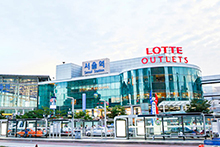
One of the most important railway stations in Seoul, Seoul Station is the starting point of the Gyeongbu Line, a double-track line that connects Seoul to Busan. Major stations on the Gyeongbu Line include Daejeon, Dongdaegu, Singyeongju, and Busan Station. Many other rail lines also start from Seoul Station, including the Jeolla∙Honam Line, with stops in Jeonju, Gwangju, Mokpo, and Yeosu.
- Address: 405, Hangang-daero, Yongsan-gu, Seoul (서울특별시 용산구 한강대로 405)
Yongsan Station
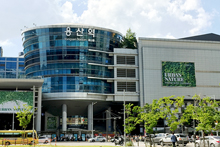
Yongsan Station is the start of the Honam Line, a double-track line that runs from Seoul to Mokpo. Major stations on the Jeolla∙Honam Line are Nonsan, Gwangju-Songjeong, Mokpo, and Iksan Stations. Travelers can also access the Gyeongbu Line from Yongsan Station.
- Address: 55, Hangang-daero 23-gil, Yongsan-gu, Seoul (서울특별시 용산구 한강대로 23길 55)
Cheongnyangni Station
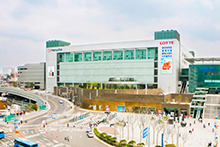
Cheongnyangni Station is used by trains headed to major tourist cities in the eastern provinces such as Jeongdongjin and Jeongseon in Gangwon-do, Andong and Gyeongju in Gyeongsangbuk-do, and Chuncheon. A KTX express train route from Seoul to Gangneung opened on December 22, 2017.
- Address: 214, Wangsan-ro, Dongdaemun-gu, Seoul (서울특별시 동대문구 왕산로 214)
Yeongdeungpo Station
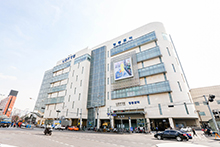
Yeongdeungpo Station covers the travel needs of passengers in the southwest part of Seoul. All non-express trains passing through Yeongdeungpo Station make stops here.
- Address: 846, Gyeongin-ro, Yeongdeungpo-gu, Seoul (서울특별시 영등포구 경인로 846)
Suseo Station (SRT)
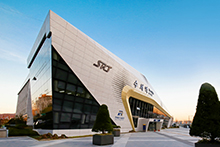
Operating from Gangnam to various major cities in the nation, the SRT (Super Rapid Train) was introduced in December 2016. Presently, the SRT offers train services from Suseo Station in Seoul to Busan and Mokpo Stations.
- Address: 99, Bamgogae-ro, Gangnam-gu, Seoul (서울특별시 강남구 밤고개로 99)
Major Train Stations in Metropolitan Cities
Gwangju-Songjeong Station

All trains on the Honam Line and Gyeongjeon Line departing from Yongsan Station and Mokpo Station make stops here, including the KTX. The station opened in 2015, reducing the travel time between Gwangju-Songjeong Station and Yongsan Station to only an hour and 33 minutes. The intercity bus terminal located nearby expands travel options to other regions through bus transit.
- Address: 201, Sangmu-daero, Gwangsan-gu, Gwangju (광주광역시 광산구 상무대로 201)
Busan Station
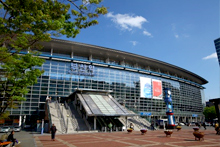
Busan Station first opened under the name Choryang Station in 1905. The station went under renovation and expansion in 2004, taking its present form. Busan Station is the first and last train station for all trains running on Gyeongbu Line and a major commercial hub of Northeast Asia.
- Address: 206, Jungang-daero, Dong-gu, Busan (부산광역시 동구 중앙대로 206)
Dongdaegu Station
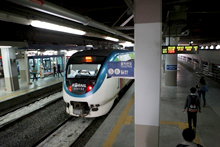
The completion of Dongdaegu Transit Center, or the Dondaegu Terminal, in 2016 connected Dongdaegu Station with the bus terminal, subways, and a shopping mall, making access to any of the four services easier than ever. Trains running on Gyeongbu Express Line, Gyeongbu Line, and Daegu Line make stops at this train station, with trains stopping by up to 400 times a day.
- Address: 550, Dongdaegu-ro, Dong-gu, Daegu (대구광역시 동구 동대구로 550)
Daejeon Station
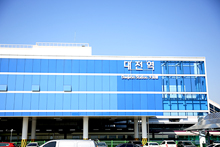
Daejeon Station is located in Dong-gu, Daejeon. Currently, an estimated average of 40,000 passengers uses the station to travel on Gyeongbu Line and Chungbuk Line. Daejeon Station is famous for garak guksu (Korean noodles), and is located near a subway station of the same name on Daejeon Subway Line 1.
- Address: 215, Jungang-ro, Dong-gu, Daejeon (대전광역시 동구 중앙로 215)
Seodaejeon Station
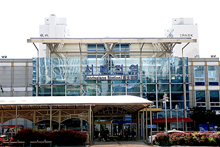
Seodaejeon Station is the departure point for those who need to travel on the Honam Line from Daejeon Station. Seodaejeon Station was opened in 1936 at Seodaejeon Naegeori Intersection, Daejeon’s major traffic hub that divides the city into four cardinal directions.
- Address: 23, Oryu-ro, Jung-gu, Daejeon (대전광역시 중구 오류로 23)
Ulsan (Tongdosa) Station
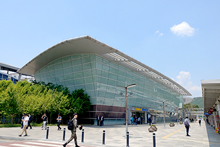
Ulsan Station is located in a suburban region of Ulsan-gun. Five buses, from Bus No. 5001 to 5005, operate from Ulsan Station to downtown Ulsan and Bus No. 3000 operate from Ulsan Station to downtown Yangsan with an interval of 30 to 60 minutes.
- Address: 177, Ulsanyeok-ro, Ulju-gun, Ulsan (울산광역시 울주군 삼남면 울산역로 177)
Train Stations in other Cities
Gangneung Station

Gangneung Station is located in Gyo-dong, Gangenung. With the Gangneung Line KTX in operation since December 2017, travel time between Seoul and Gangwon-do’s Gangneung now only takes two hours.
- Address: 176, Yongji-ro, Gangneung-si, Gangwon-do (강원도 강릉시 용지로 176)
Namwon Station
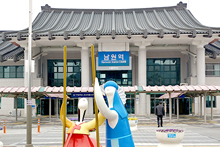
Namwon Station is on Jeolla Line, bypassing the famous Jirisan Mountain. With a yearly average of 74,000 passengers, not only is Namwon Station frequented by the residents of Korea’s southern province, but it is also visited nonstop by tourists.
- Address: 71, Gyoryong-ro, Namwon-si, Jeollabuk-do (전라북도 남원시 교룡로 71)
Donghae Station
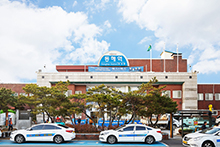
Donghae Station first opened under the name Bukpyeong Station on August 1, 1940 and changed to its current name on June 1, 1984. In March of 2020, Donghae Station added a KTX line connecting to Seoul Station via Jeongdongjin Station. Other trains that run in this station include Sea Train to Chuam and Samcheok; Mugunghwa, and Nuriro trains. The station is located near the Donghae International Passenger Terminal
- Address: 69, Donghaeyeok-gil, Donghae-si, Gangwon-do (강원도 동해시 동해역길 69)
Mokpo Station
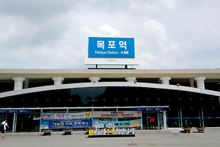
Mokpo Station is the first and last train station on Honam Line as well as the southernmost train station in Korea. Since the station’s first commencement of KTX in 2004, it continues to see a huge number of both domestic and international travelers visiting nearby tourist attractions such as Dadohae Sea, Yeongam-gun, Haenam-gun, Muan-gun, Sinan-gun, and Jindo-gun. In addition to KTX, Mugunghwa and ITX-Saemaeul also make stops here.
- Address: 98, Yeongsan-ro, Mokpo-si, Jeollanam-do (전라남도 목포시 영산로 98)
Singyeongju Station
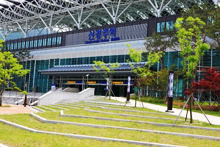
Inspired by Korea’s traditional architecture and Bulguksa Temple, Singyeongju Station features images of royal tombs and roof-end tile with face engraving as part of its landscape. Providing service to an estimated daily average of 3,200 passengers, Singyeongju Station was built in 2010 as part of government’s plan to further extend express train services throughout Korea.
- Address: 80, Singyeongjuyeok-ro, Gyeongju-si, Gyeongsangbuk-do (경상북도 경주시 건천읍 신경주역로 80)
Suncheon Station

Suncheon Station is the major transportation hub connecting Jeollanam-do’s eastern regions, namely Yeocheon, Gwangyang, and Yulchon Industrial Complex. Many passengers stop by this station to transfer from Gyeongjeon Line to Jeolla Line or vice versa. Visitors can take the KTX and Mugunghwa trains at this station.
- Address: 135, Palma-ro, Suncheon-si, Jeollanam-do (전라남도 순천시 팔마로 135)
Yeosu EXPO Station
Yeosu Station first opened in 1930 as the last stop on Joalla Line. KTX began to operate between Yongsan and Yeosu in 2011 upon the completion of Jeolla Line upgrade project. Other trains that stop by Yeosu EXPO Station are ITX-Saemaeul, Mugunghwa, and Nuriro.
- Address: 2, Mangyang-ro, Yeosu-si, Jeollanam-do (전라남도 여수시 망양로 2)
Iksan Station
Originally named as Iri Station, the name was changed to Iskan Station in 1995. The construction of Honam Express Line reduced the travel time between Seoul and Iksan Station to one hour and 16 minutes on KTX. Other trains that stop by this Station are Saemaeul, Mugunghwa, and SRT.
- Address: 153, Iksan-daero, Iksan-si, Jeollabuk-do (전라북도 익산시 익산대로 153)
Jeonju Station
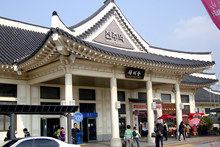
Jeonju Station is on Jeolla Line and built in a hanok motif. It takes approximately 1 hour and 35 minutes between Seoul and Jeonju Station on KTX. Besides KTX, ITX-Saemaeul and Mugunghwa also make stops at this station.
- Address: 680, Dongbu-daero, Deokjin-gu, Jeonju-si, Jeollabuk-do (전라북도 전주시 덕진구 동부대로 680)
Chuncheon Station
Chuncheon Station is the stop after Namchuncheon Station and the last stop on Gyeongchun Line. Gyeongchun multi-track metro line was completed in 2010 and transit is provided by the newly introduced ITX-Cheongchun Train. Due to several popular attractions located nearby, Chuncheon Station is always bustling with visitors.
- Address: 591, Gongji-ro, Chuncheon-si, Gangwon-do (강원도 춘천시 공지로 591)
Pohang Station
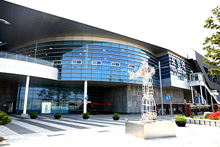
Pohang Station is located in the northern region of Heunghae-eup. Since KTX started to provide service at Pohang Station in 2015, transportation between Seoul and Pohang, as well as other southeast coastal regions, has become much more convenient.
- Address: 1, Pohangyeok-ro, Buk-gu, Pohang-si, Gyeongsangbuk-do (경상북도 포항시 북구 흥해읍 포항역로1)
Train Classifications
Korea Train Express (KTX)
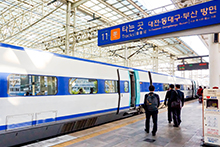
Korea’s express train, aptly named the KTX, began operations in April 2004. This high-speed train is designed to reach speeds of up to approximately 305 kilometers per hour.
ITX-Saemaeul
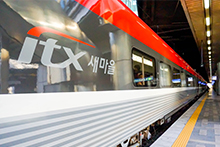
Operating on Gyeongbu, Honam and Gyeongjeon Lines, this train runs in place of regular Saemaeul trains, running at a slightly faster speed.
Mugunghwa
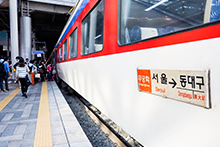
Mugunghwa came into scene in 1984 when udeung (luxury) passenger train started operation. This train is distinct in that it makes stops at smaller stations that the KTX or ITX-Saemaeul trains bypass.
Super Rapid Train (SRT)
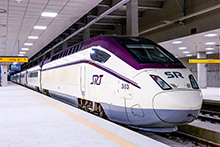
A super rapid train, known as the SRT, operates on the Gyeongbu and Honam Lines from Suseo Station.
Detailed Information about Trains
- KORAIL website: info.korail.com (Korean, English)
- KORAIL PASS page: www.letskorail.com (English, Japanese, Chinese)
- SR Website: etk.srail.co.kr (Korean, Japanese, Chinese)
- KORAIL Customer Service Center: +82-1599-7777 (English, Japanese, Chinese)
- SR Customer Service Center: +82-1800-1472 (English)
Information and photos of major train stations courtesy of KORAIL and Korea Tourism Organization
Suseo Station and SRT photos courtesy of SR
This page was last updated on September 9, 2021, and therefore information may differ from what is presented here.
